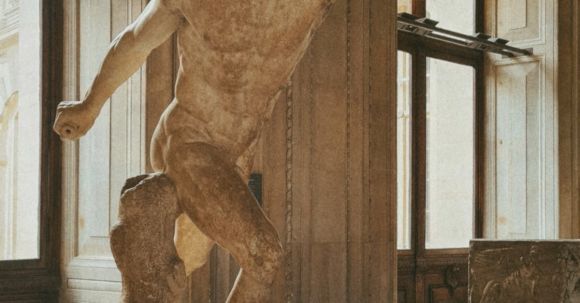Humans have always been fascinated by the past. The remnants of ancient civilizations hold a certain allure, whispering stories of lost cultures and forgotten knowledge. Among these remnants, ancient artifacts stand as silent witnesses to the lives and beliefs of those who came before us. But deciphering the meaning behind these artifacts is no easy task. It requires a keen eye, meticulous research, and a touch of intuition. In this article, we will delve into the world of ancient artifacts and explore the methods used to unravel their mysteries.
The Language of Symbols
Symbols have played a crucial role in human communication throughout history, and ancient artifacts are no exception. From intricate carvings to elaborate engravings, symbols found on ancient artifacts often hold the key to understanding their purpose and significance. For example, the Ankh, an ancient Egyptian symbol resembling a cross with a loop at the top, is commonly found on ancient Egyptian artifacts. It is believed to represent the concept of eternal life. By studying the symbols present on ancient artifacts, archaeologists and historians can gain valuable insights into the cultures that created them.
Context is Key
While symbols may provide clues, understanding the context in which an artifact was found is equally important. The location, surrounding artifacts, and historical records all contribute to piecing together the puzzle. For instance, a potsherd found in a burial site may indicate a funerary ritual, while a tool discovered near a river could suggest a civilization reliant on fishing. By carefully analyzing the context in which an artifact is found, researchers can gain a deeper understanding of its purpose and significance within a particular culture.
Technological Advancements
Advancements in technology have revolutionized the study of ancient artifacts. Techniques such as radiocarbon dating and X-ray analysis have allowed researchers to accurately determine the age, composition, and origin of artifacts. For example, radiocarbon dating uses the decay of radioactive isotopes to estimate the age of organic materials, providing invaluable information about the timeline of ancient civilizations. X-ray analysis, on the other hand, can reveal hidden details within an artifact, such as hidden inscriptions or construction techniques. These technological advancements have greatly expanded our knowledge and understanding of ancient artifacts.
The Power of Collaboration
Unraveling the mysteries of ancient artifacts is not a solitary pursuit. Collaboration among experts from various fields is essential in piecing together the puzzle. Archaeologists, historians, linguists, and scientists all bring their unique expertise to the table, enabling a more comprehensive understanding of ancient artifacts. By combining their knowledge and insights, these experts can uncover the hidden stories behind these ancient treasures.
Preservation and Conservation
Preserving and conserving ancient artifacts is not just a matter of protecting physical objects; it is also about safeguarding our cultural heritage. While technologies such as 3D scanning and virtual reality have made it possible to create digital replicas of artifacts, there is no substitute for the real thing. Proper conservation practices ensure that these artifacts remain intact for future generations to study and appreciate. Through careful preservation, we can continue to unravel the mysteries of ancient artifacts for years to come.
In conclusion, ancient artifacts offer us a glimpse into the past. By studying the symbols, understanding the context, harnessing technological advancements, collaborating with experts, and preserving these treasures, we can unravel their mysteries. Each artifact holds a story waiting to be discovered, and it is through our curiosity and dedication that we can unlock the secrets of the past. So let us continue to explore, question, and uncover the wonders of ancient civilizations through their artifacts.
